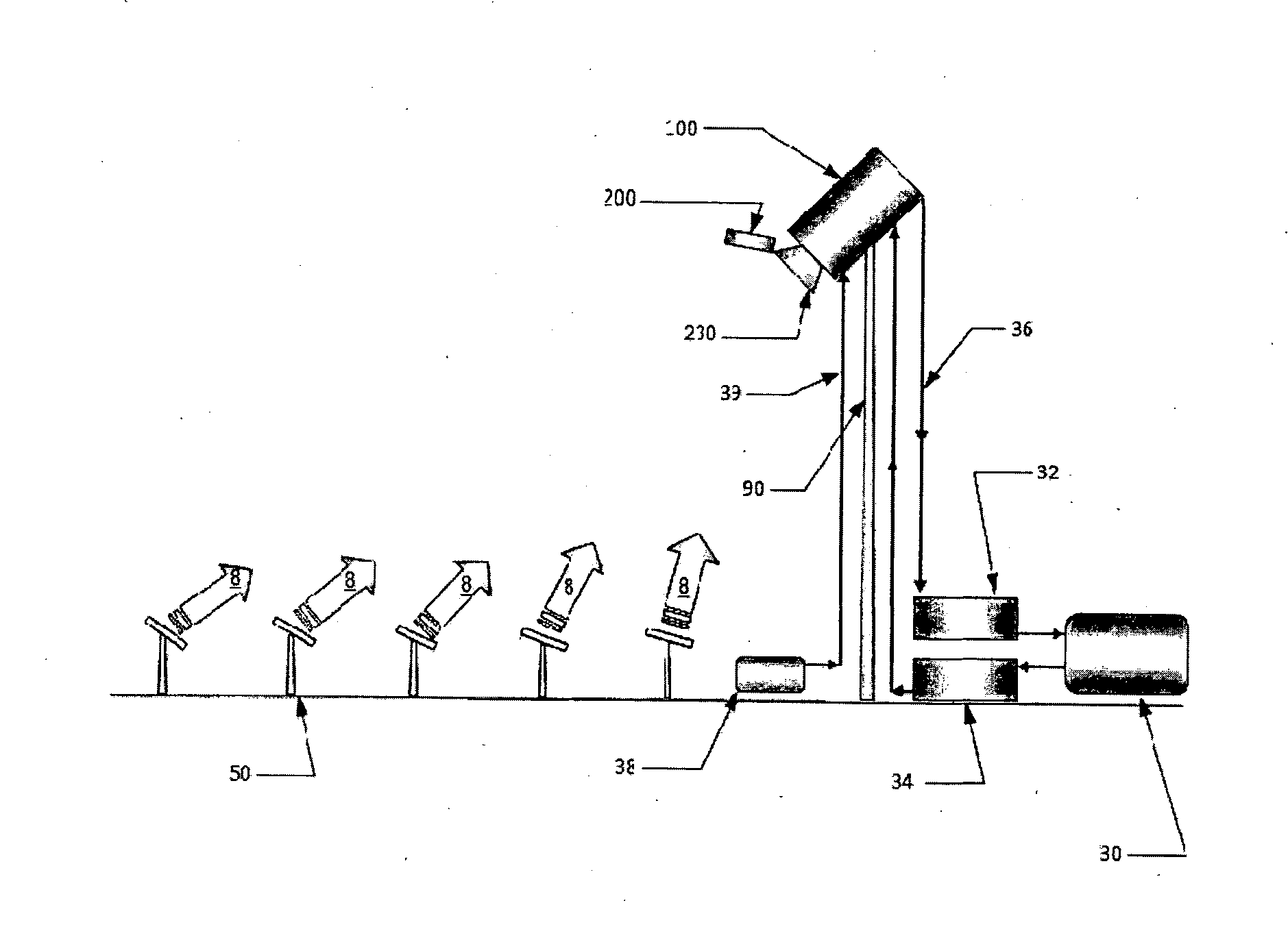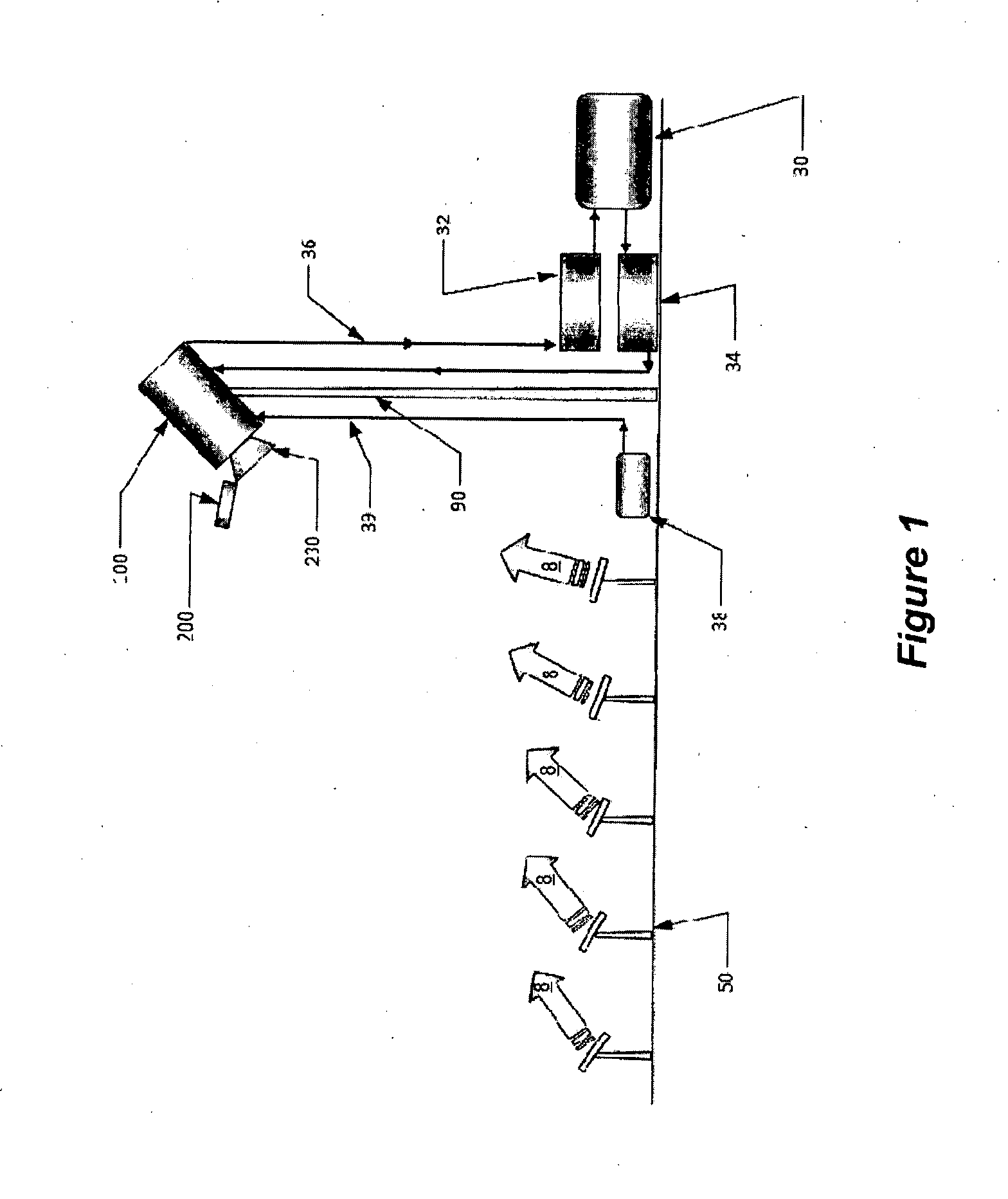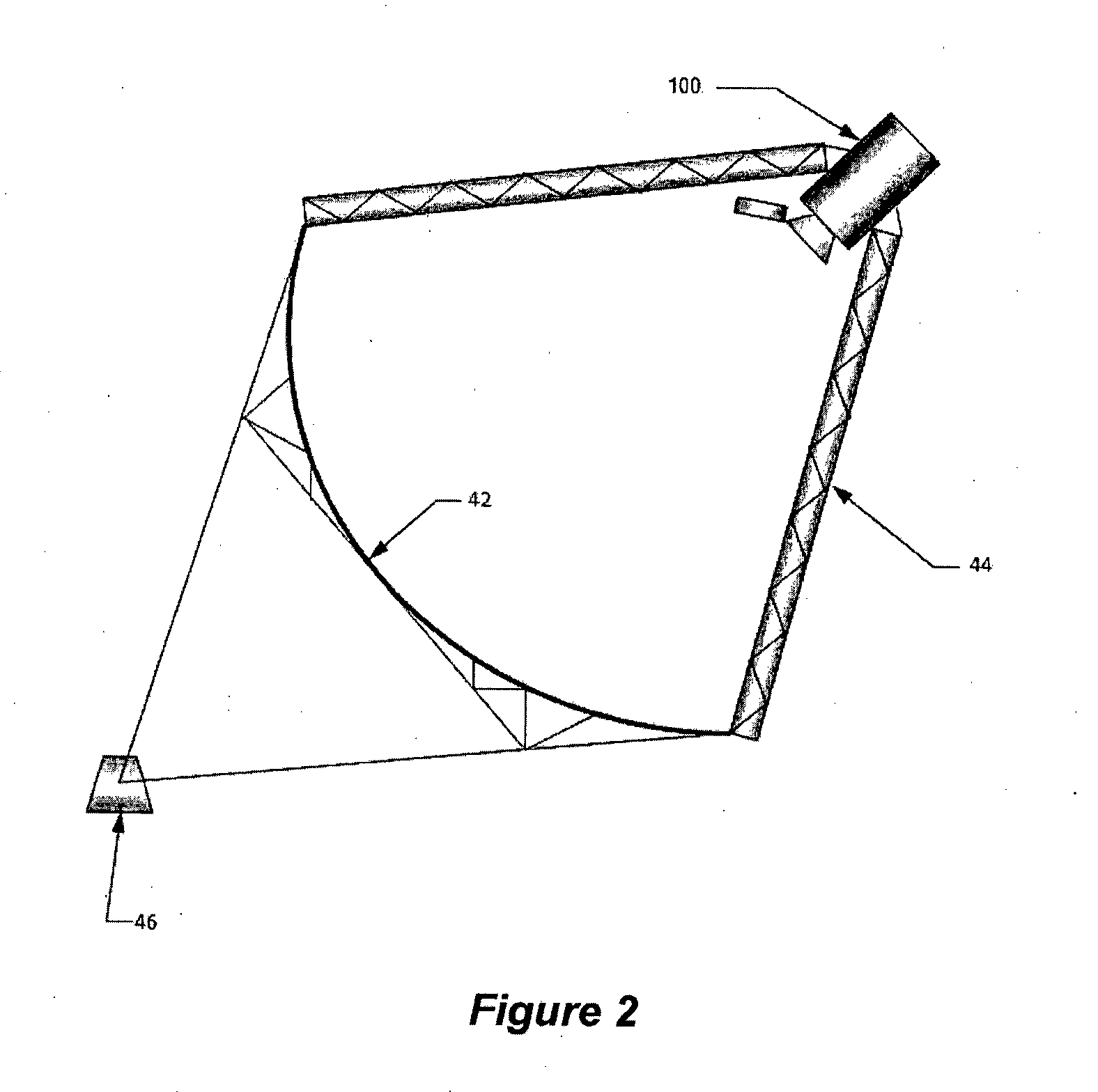Hybrid receiver-combustor
a receiver and hybrid technology, applied in the direction of electric generator control, lighting and heating apparatus, machines/engines, etc., can solve the problems of limited resources, only substituting a fraction of the need, fossil fuel power, etc., and achieve the effect of minimising convective losses and minimising convective losses through the apertur
- Summary
- Abstract
- Description
- Claims
- Application Information
AI Technical Summary
Benefits of technology
Problems solved by technology
Method used
Image
Examples
first embodiment
[0094]FIG. 3 shows a hybrid receiver-combustor 100 according to the invention in a diagrammatic cross-sectional view. The hybrid receiver-combustor 100 includes a vessel 110 that acts both as a combustion furnace and as a solar receiver, and a plurality of burners 180 for combusting an oxidant stream, such as an air stream, and a fuel stream. The vessel or furnace 110 includes a casing 120 defining a cavity 125 having an aperture 130 for receiving the concentrated solar radiation referred to above. The cavity 125 provides a chamber defining a zone 126 which can function as a combustion zone for production of heat energy through a combustion process using the fuel and into which concentrated solar radiation can be received from the solar source through the aperture 130.
[0095]Each burner 180 is arranged in fluid communication with the cavity 125 so as to direct a flame into the cavity 125. The flame 182 creates a flame zone and also generates an exhaust gas 184.
[0096]A heat energy abs...
second embodiment
[0133]The operation of the invention shown in FIG. 4 will now be described while providing further, detail as to the components of the embodiment.
[0134]The concentrated solar radiation enters the cavity 125 through the aperture 130. The aperture 130 is advantageously fitted with a concentrating parabolic concentrator (CPC) 230.
[0135]The inside of the cavity 125 is lined with tubes to convey the heat-transfer fluid, which is to be heated. The heat-transfer fluid can be any gaseous or liquid fluid, such as molten salt or steam, in the case of power generation applications. Non-power generating applications include a mixture of stream and carbonaceous particles to be heated for the purpose of gasification, but this list is not intended to be exhaustive. Small gaps are required between the tubes 192 to allow for thermal expansion.
[0136]A ring of burners 180 are introduced from the opposite end of the chamber to the aperture, to fire toward the aperture, in the opposite general direction...
fourth embodiment
[0159]In this fourth embodiment, the vessel 110 comprises a side section 194, a top section 195 and a bottom section 196. The aperture 130 is incorporated in the side section 195 and the burner 180 is incorporated in the bottom section 196, as shown in FIG. 12. With this arrangement, the burner 180 is arranged to fire generally transversely of solar radiation entering the cavity 125 through the aperture 130 through the aperture to thereby impinge upon the incoming solar radiation.
[0160]The fourth embodiment of the hybrid receiver-combustor 100 is oriented such that the aperture 130 faces the solar source and thereby the portion of the side section 194 which incorporates the aperture constitutes the front end of the hybrid receiver-combustor.
[0161]In the embodiments which have been described and illustrated, the heat energy absorber is configured as a heat-transfer fluid heat exchanger. Other arrangements are possible, as outlined below.
[0162]One such other arrangement involves appli...
PUM
 Login to View More
Login to View More Abstract
Description
Claims
Application Information
 Login to View More
Login to View More - R&D
- Intellectual Property
- Life Sciences
- Materials
- Tech Scout
- Unparalleled Data Quality
- Higher Quality Content
- 60% Fewer Hallucinations
Browse by: Latest US Patents, China's latest patents, Technical Efficacy Thesaurus, Application Domain, Technology Topic, Popular Technical Reports.
© 2025 PatSnap. All rights reserved.Legal|Privacy policy|Modern Slavery Act Transparency Statement|Sitemap|About US| Contact US: help@patsnap.com



